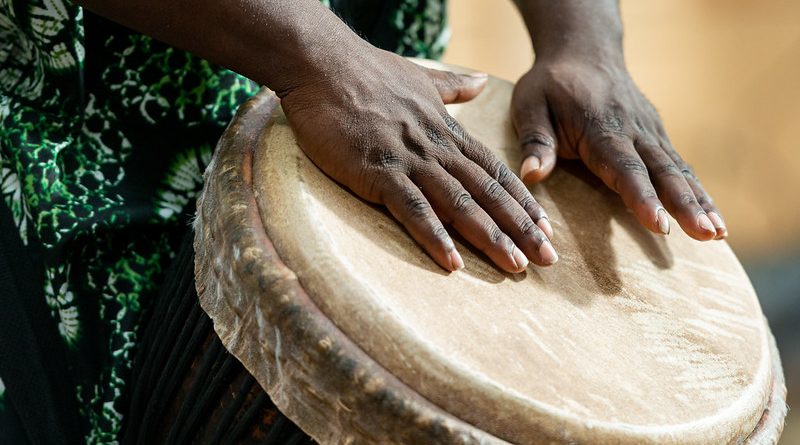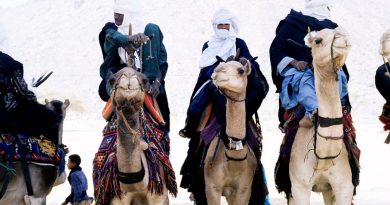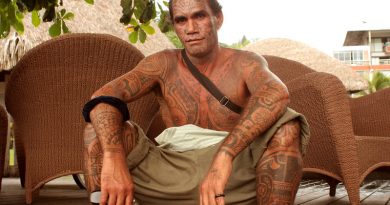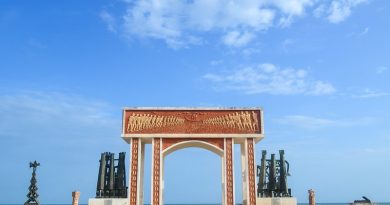West African Talking Drums and Music
Culture Facts
Where: Across West Africa, particularly in Senegal
What’s it about: Favouring rhythm over melody, using ‘talking drums’ and a wide range of percussion instruments to create rich musical dialogues
Joining in: Take a djembe class in The Gambia, or closer to home in USA or Europe
The musical concepts in Africa are inherently different to what people in the West are used to hearing. We use music to accompany work and activities, whereas in African society, it is incorporated into their work. They create sounds that reflect and express life as opposed to strictly being for their aesthetic value, making it difficult for the Western ear to interpret. The music is strongly linked to myth, proverbs and folklore, and is generally practiced as a group activity.
Musical traditions are traced back as far as the cultures themselves. Whereas Western music favours melody and instrumentation, you will find rhythm at the core of West African music, the texture and layering from the percussion, especially the drum, adding colour and life to the culture.
Instruments Used in West African Music
As well as the musical product, West Africa is also famous for it’s imaginative instruments, designed from materials close to hand. The djembe, tama and sabar are drums. The balafon is like a xylophone, and there are several stringed and wind instruments, such as the reed flute, thekora and the kontingo.
The djembe is on the verge of achieving world status as a percussion instrument. Since the late eighties, it is increasingly being recorded professionally. It is prolific throughout West African countries, however it is still little understood outside of its homeland. Speaking English is a low priority when it comes to players of the djembe, the mother tongue often being Mandinka, Susu or Bamana, with other African languages such as Fula, Wolof and Soninke and then French being spoken.
The origin of the djembe is uncertain, however it is widely believed to have descended from thenumu, Mandinka and Susu blacksmiths believed to hold certain powers. The dispersion of the people caused the djembe to spread throughout the Western region of Africa.
The rhythms of the djembe have associated dances and meanings. The drum family is considered the most representative of African instruments, found in societies and tribes across the continent. The drums speak in codes the language of the tribes, and are frequently used to communicate news and messages between towns.
The talking drums of West Africa are renowned for their ability to closely imitate the rhythms and intonations of the spoken word, the more skilled players can reproduce dialogue understood by a knowledgeable audience. By sending the messages along, they can be carried for miles.
It is said that the djembe dates from as far back as 500AD, made from a curved tree trunk and goatskin. No sticks are used, and it should not be placed on a surface, instead suspended from the players’ shoulders. Dubbed the ‘magic drum’ for its ability to move people and the ‘healing drum’ for its history as a fundamental tool in healing traditions
The Griots
The West African griot arose from the Mandinka empire in the fifteenth century, and for over four thousand years the caste members have retold the history of that ancient empire, handed down through the generations to keep the stories of the villages and the families alive. Jeli is the Mandinka word for griot, and he is described as the ‘mind’ of his people, the oral library of their culture and history.
The griots accompany their songs with a kora, a 21-string lute, with a sound resembling that of a melodic harp. A complex instrument, it is placed between the legs, and plucked delicately with the forefingers and thumbs. The griots themselves make the koras they play from cowhide stretched over a calabash. They often attach gris-gris charms to the instrument. Griots must spend years training as apprentices, and they learn the skills of playing the kora at twelve, only after spending their childhood listening and observing their elders. It can then take thirty or forty years to become accomplished in this difficult instrument, and be classed a nara.
Within the traditional African society, however, the griot is still deeply respected by all its members, as he remains an integral and influential part of the culture and history. Now he is less a conveyer of politics, as an oral link to the past. In Europe, it is noted how we have no equivalent, and modern culture has all but eroded our oral traditions, we can just hope the same will not be true of the African griot.
Another factor risking the continuance of this tradition is the increase of young griots marrying outside of their caste, declining the line of tradition. It is feared that the griots’ primary role is now moving towards that of an entertainer, with government sponsorship marginalizing the movement. Ultimately, in order to survive the times, any tradition needs to be adaptable to change, and while remembering their forefathers’ traditions, the young griots do in fact embrace modern influences, as it is up to them to interpret the tradition to another generation.
The role of the griot is slowly diminishing, partly due to the threat from encroaching Western culture, and some tribes are struggling to maintain their traditions. This has been recurrent throughout much of Africa, and as a result, the younger generation have found new ways to embrace the modern global world, fusing their traditions to create hybrid styles, such as mixing the kora with jazz and flamenco.
Modern Musical Fusions
Increasingly, Western musicians are incorporating African styles and rhythms into their music to produce diverse sounds. Musicians coming out of West Africa also enjoy worldwide fame, such asYoussou N’dour and Salif Keita.
One of the most popular examples of traditional Senegalese music, mixed with Western instruments is the mbalax, using the sabar drum to lead the rhythm section. Described as Afro-Beat fused with African music, soul and jazz, it is based in Nigerian Yoruba culture.
Ghanaian highlife, a goodtime, urban dance form is their most famous musical export. Also found in Sierra Leone, it combines traditional African rhythms with western influence, anything from gospel to brass.
Learning to Hear the Rhythms
It’s possible to take lessons from the local teachers who will put you through your paces, and beats. There is a mix of backgrounds and a range of instruments, from the traditional djembe to sabar, played with an acacia stick, the ‘talking drum’, which you rest under your arm, and can play in a way to communicate with others. You can get lessons in the village of Ker Sering, in The Gambia.
Closer to home, you can take classes in the UK and Europe, from Traditional Guinean Dance and Djembe Workshops, who run one and two day courses over a weekend for between £12-30. Check out www.djembeschool.org for more information and when the courses run.
In the US, African Drumbeat lists teachers and groups whom meet regularly to practice the art of African drumming. This site also features schools in the UK, Canada and Australia.
If learning at a school is more your thing, at Gambia Griot you can find details of schools running in the Gambia. These intensive three-hour sessions are taught by griots, whom ensure you get the best possible tuition in the kora, balaphone, and various drums. You can expect to pay about $20 for a group session, and $30 for private tuition in peak season, with a reduction off-peak. Accommodation is available, room-only, for about $40 a week. The classes are held inSerrekunda.
Main image: African Musicians and Dancers, simpleinsomnia, Flickr Creative Commons
By Jenna Colbourne




